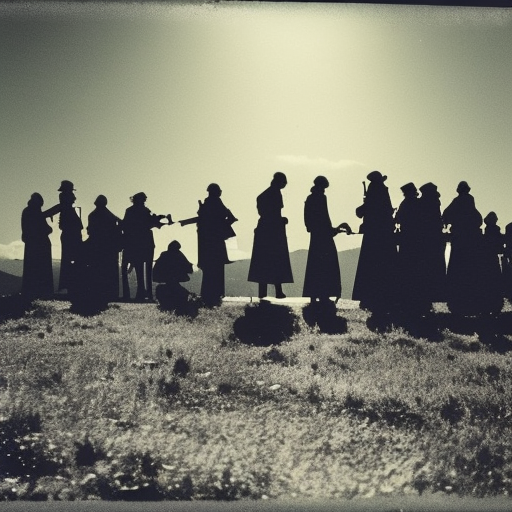Balkans Campaign: A Summary
The Balkans Campaign refers to a series of military operations that took place during World War I in the Balkan Peninsula. The campaign was fought between the Central Powers, primarily Germany, Austria-Hungary, and Bulgaria, and the Allies, including Serbia, Montenegro, Greece, and later Romania. The campaign lasted from 1914 to 1918 and had significant implications for the outcome of the war.
Background:
Prior to the outbreak of World War I, the Balkans were a volatile region characterized by ethnic and political tensions. The decline of the Ottoman Empire created a power vacuum, leading to conflicts between various Balkan states. The assassination of Archduke Franz Ferdinand in Sarajevo in 1914 triggered a series of events that eventually led to the Balkans Campaign.
1914: Initial Offensives and Serbian Resistance:
In 1914, Austria-Hungary launched an offensive against Serbia, aiming to crush the Serbian army and secure its southern border. However, the Serbs put up a strong resistance, successfully repelling the Austro-Hungarian forces. This initial setback for the Central Powers marked the beginning of a long and arduous campaign in the Balkans.
1915: Bulgarian Entry and Allied Retreat:
In 1915, Bulgaria joined the Central Powers, further tilting the balance in their favor. The Allies, facing the threat of a Bulgarian invasion, began a strategic retreat. Serbia, overwhelmed by the combined forces of Austria-Hungary, Germany, and Bulgaria, was forced to withdraw its troops and evacuate to Greece. The Serbian army, along with thousands of civilians, endured a grueling retreat through the mountains in harsh winter conditions.
1916: Allied Counteroffensive and Romanian Entry:
In 1916, the Allies launched a counteroffensive in an attempt to regain lost ground. The Serbian army, reinforced by troops from France and Britain, managed to recapture parts of Serbia and push back the Central Powers. Meanwhile, Romania, seeking territorial gains, joined the Allies and launched an offensive against Austria-Hungary. However, the Romanian campaign quickly turned into a disaster, with the Central Powers launching a successful counterattack and occupying much of Romania.
1917-1918: Stalemate and Conclusion:
The Balkans Campaign reached a stalemate in 1917, with both sides unable to make significant gains. The frontlines remained relatively stable until the end of the war. In 1918, the Allies launched a final offensive, known as the Vardar Offensive, which aimed to break through the Bulgarian lines and advance towards Austria-Hungary. The offensive was successful, leading to the capitulation of Bulgaria in September 1918. This breakthrough in the Balkans played a crucial role in the collapse of the Central Powers and the eventual end of World War I.
Impact:
The Balkans Campaign had significant implications for the outcome of World War I. It tied down substantial Central Powers’ resources, diverting them from other fronts. The campaign also highlighted the importance of the Balkans as a strategic region and the need for control over its resources and transportation routes. Furthermore, the campaign contributed to the disintegration of the Austro-Hungarian and Ottoman Empires, leading to the redrawing of borders and the creation of new nation-states in the Balkans.
In conclusion, the Balkans Campaign during World War I was a complex and protracted series of military operations that shaped the course of the war. It involved multiple nations and had far-reaching consequences for the region. The campaign showcased the resilience of the Serbian army, the shifting alliances in the Balkans, and the strategic importance of the region. Ultimately, the Balkans Campaign played a significant role in the outcome of World War I and the subsequent geopolitical changes in the Balkan Peninsula.












